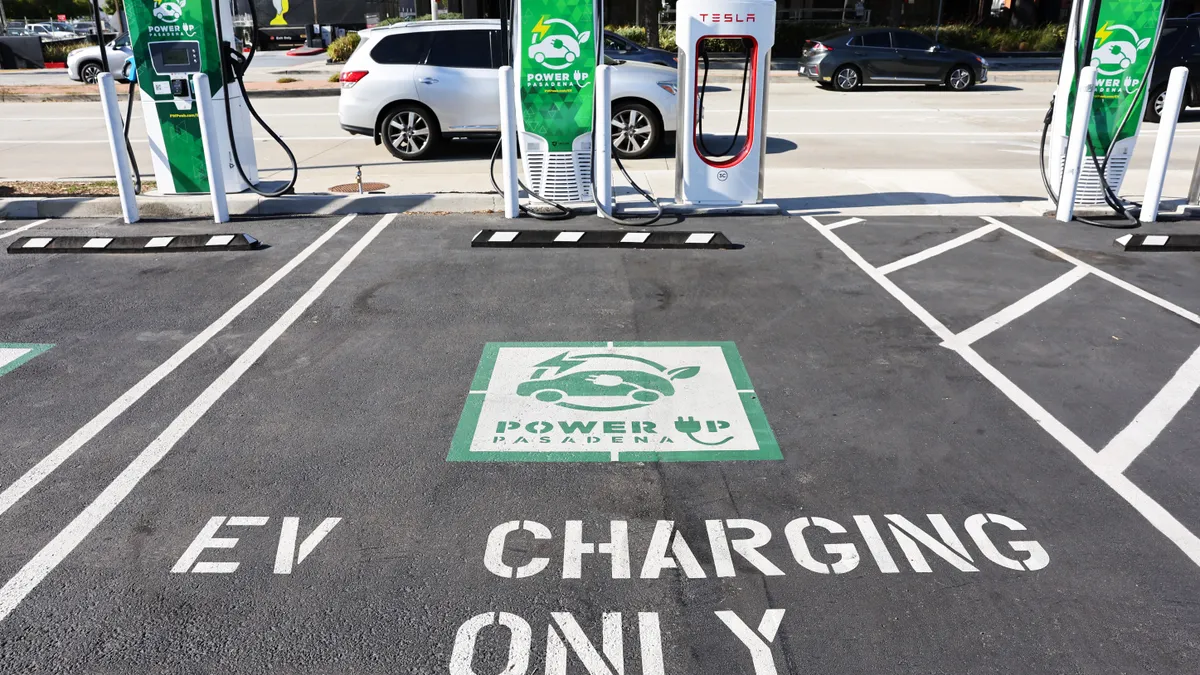Dive Brief:
- The Biden administration on Friday issued proposed electric vehicle tax credit rules laying out how EVs will be able to qualify for up to $7,500 in credits for the consumer based critical mineral and battery component sourcing requirements.
- By 2029, all battery components must be manufactured or assembled in North America; by 2027, 80% of the value of the critical minerals contained in the battery must be extracted or processed in the U.S. or a country with a free trade agreement in place with the U.S.
- The U.S. Department of the Treasury will take comment on the proposed rules for 60 days. Sen. Joe Manchin, D-W.Va., is calling on voters to raise concerns. “American tax dollars should not be used to support manufacturing jobs overseas,” he said in a statement.
Dive Insight:
Manchin’s vote was key to advancing the Inflation Reduction Act, which revived the popular EV tax credits. But since then he has been critical of how the credits are being implemented, and he introduced legislation in January to halt the credits until guidance was issued.
Now, Manchin says Treasury’s proposed rules allow too much leeway on materials sourcing.
“It is horrific that the Administration continues to ignore the purpose of the [Inflation Reduction Act,] which is to bring manufacturing back to America and ensure we have reliable and secure supply chains,” he said. “It is a pathetic excuse to spend more taxpayer dollars as quickly as possible.”
The proposed rules include a three-step process for determining the percentage of the value of critical minerals in a battery that contributes toward meeting tax credit requirements: determine procurement chains, identify qualifying critical minerals and calculate qualifying critical mineral content.
A four-step process would be used for of battery components: identify battery components that are manufactured or assembled in North America, determine the incremental value of each battery component, determine the total incremental value of battery components and calculate the qualifying battery component content.
The rules will help to build “a strong U.S. industrial base” while “bolstering supply chains,” Secretary of the Treasury Janet Yellen said.
The electric vehicle sector welcomed the proposed guidance, which “provides a clear roadmap for automakers, battery manufacturers, and critical mineral suppliers,” Albert Gore, executive director of the Zero Emission Transportation Association, said in a statement.
ZETA represents a broad swath of the EV sector. Its members include Tesla, EVgo, ChargePoint, NextEra Energy, Lyft, Xcel Energy, Southern Co., Rivian and others.
“These credits will provide the economic and policy certainty needed to deploy the hundreds of billions of dollars already committed to transportation electrification,” Gore said.
Plug in America, a consumer-focused EV advocacy group, said the proposed rule “successfully supports rapid EV adoption while building our country’s domestic supply chain.”
President Biden wants 50% of new car sales to be electric by 2030, a goal experts say is ambitious and will test constrained supply chains.
Battery manufacturers are rushing to develop capacity in the United States to meet demand for electric vehicles, according to BofA Global Research. More than a dozen new EV battery facilities have been announced, “aided by the latest round of Federal incentives in the Inflation Reduction Act,” Bank of America Securities Research Analyst Andrew Obin wrote in a February report.
EV sales are rapidly rising and were 7% of new U.S. vehicle sales in 2022, according to the Alliance for Automotive Innovation. For the month of December the figure was 10%, the group said.
The White House on Thursday unveiled the first set of public and private commitments under its EV Acceleration Challenge.
Federal agencies have acquired 13,000 light- and medium-duty zero emission vehicles in fiscal year 2023, “about four times the number of ZEVs acquired in FY22,” according to the announcement. Biden’s federal sustainability plan requires agencies to transition to all electric vehicles by acquiring 100% light-duty ZEVs annually by 2027 and acquiring 100% medium- and heavy-duty ZEVs annually by 2035.














